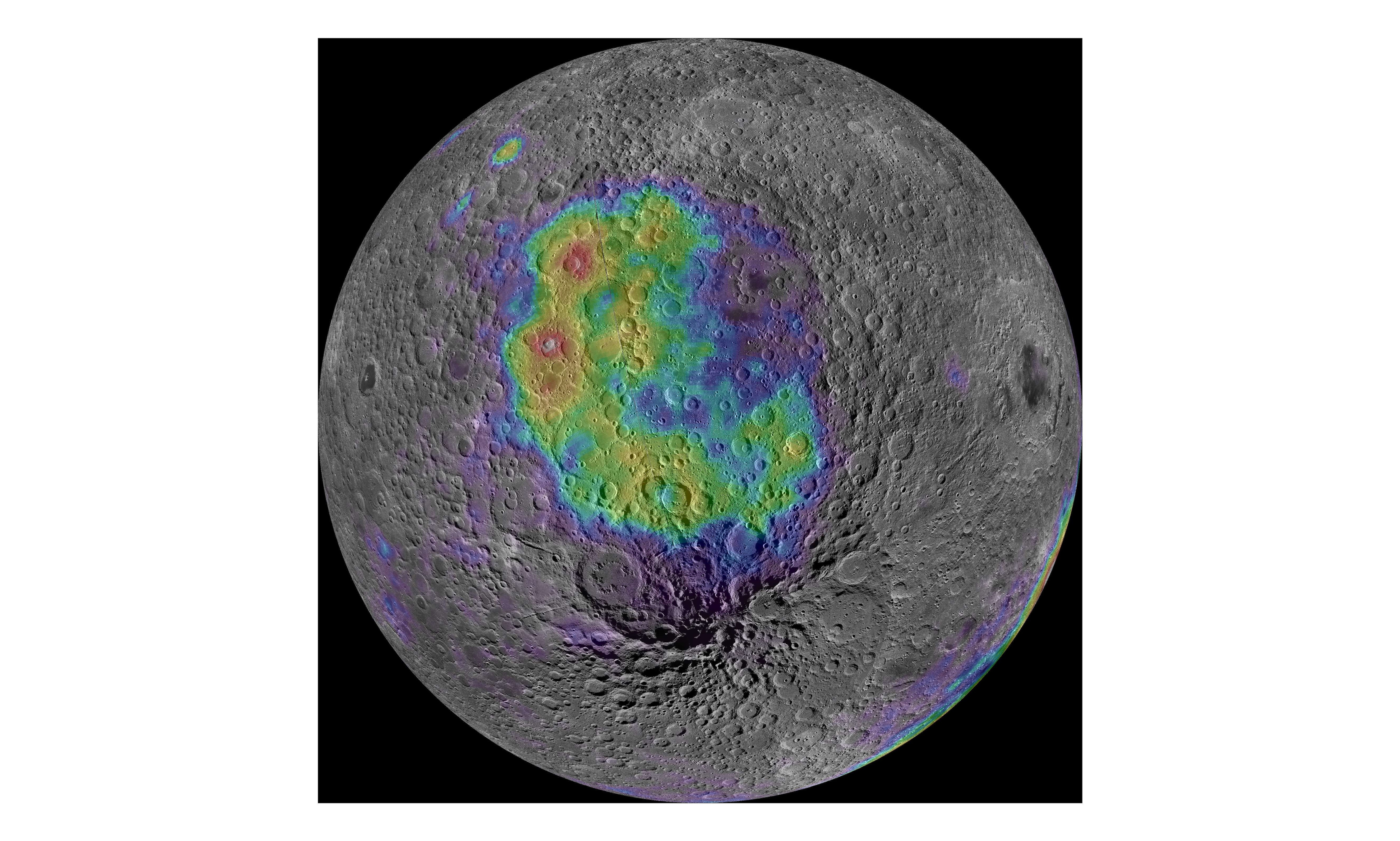Create a free profile to get unlimited access to exclusive videos, sweepstakes, and more!
The Moon was an ocean of fire billions of years ago

The Moon looks anything but alive today, but what appears stone dead was once very much alive with scorching flows of magma.
What looks like a cosmic no-man's land (though we will be sending humans up there) had a temper hot enough to melt rock. It became an orb of magma after its fiery birth at the dawn of the solar system, when the protoplanetary cloud of dust and gas that objects formed in collapsed in on itself, unpredictably shoving things together. The growing Moon generated enough heat to turn itself into a seething fireball.
Now NASA scientists have found the palces on the Moon where pieces of mantle are most likely to be billions of years later. Daniel Moriarty, of NASA's Goddard Space Flight Center, led two studies on this, one recently published in Nature Communications and the other in JGR Planets. He believes the process was seriously messed up.
"We can’t peer into the mantle and watch its behavior, but we can use computers to simulate how mantle materials move and mix," Moriarty told SYFY WIRE. "Processes started happening faster than the magma ocean could solidify, and what ended up happening was a lot of mixing between all the layers."
Some of this mixing seems to have defied physics. How could denser materials accumulate on top of materials that were less dense? The short answer is chaos. The scientific answer is gravitational overturn. Stuff which sank later became denser over time. That wouldn't have been a problem if less dense material had alreayd accumulated under it. Obviously, the less dense material was dying to break through that dense layer, because physics. That was hardly it. Heat was also struggling to escape, and that brought on convection, when a hotter and less dense material rises while gravity causes colder and denser material to sink.
The Moon could evidently take the heat but had a hard time cooling off. Both those processes were not only happening at the same time, but before the magama ocean had a chance to solidify. Not that it went to sleep after that. Those craters are there for a reason. Constantly bombarded by asteroids and other objects hurtling through space, the lunar crust took a beating, vomiting out blazing hot pieces of mantle that landed all over the surface. Moriarty and his team found that the most probable landing place for chunks of lunar mantle is Aitken basin, the largest known impact crater on the Moon.
Then there was the case of the mysterious sludge. No, it's not the alien-looking green stuff that was found on the Moon last year. Unlike that substance, now thought to be glass, this was actual sludge that formed in the upper part of the mantle right when the never-ending sea of magma was just about finished crystallizing. Scientists were previously confused by the sludge because it was so dense that it should have sunk down to the depths of the mantle early on and therefore been detected much lower in the mantle. That turned out to be deceptive.
"Lab experiments and computer models agree that this sludge should have a specific composition high in certain elements, such as thorium, iron, titanium, potassium, phosphorus rare earth elements, and minerals like clinopyroxene and ilmenite" said Moriarty. "That is exactly what we see in satellite data, confirming our hypothesis."
The Moon is not alone. Earth went through something similar when the young planet first emerged, except its crust was eventually covered in oceans, rivers, lakes, mountains, deserts, grass and everything you can think of that can cover up the effects of temperamental magma. Devoid of the geological processes that happen on Earth, the Moon has managed to hold on to the evidence of what shaped it aeons and aeons before the universe ever dreamed of a dinosaur. This is why Moriarty thinks studying the remnants of its magma ocean can tell us more about our own planet and othe rocky bodies.
"An interesting thing to follow up on is how magma oceans cool over time," he said. "As they slowly churn and release heat, that can lead to millions of years of volcanic and seismic activity, which can mean harsh conditions, but the volcanic activity can also release gases and water onto the planet’s surface. That has really important implications for habitability."
So nothing lives on the Moon, and even the tardigrades that crashed with failed Israeli lander Beresheet probably didn't survive, but this could have implications for Earthlike planets out there that are waiting to be found.














